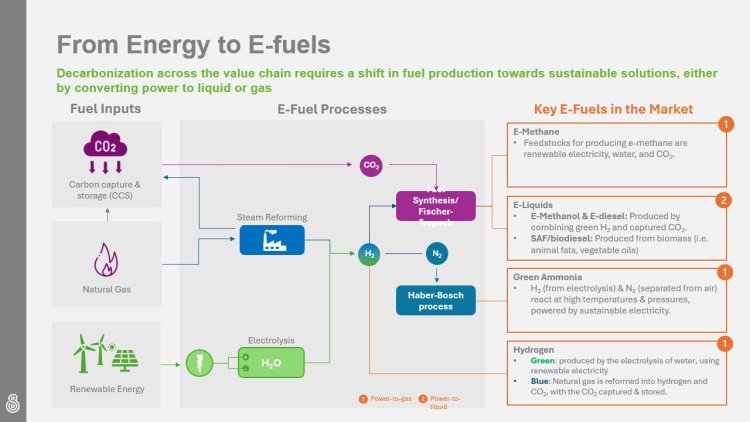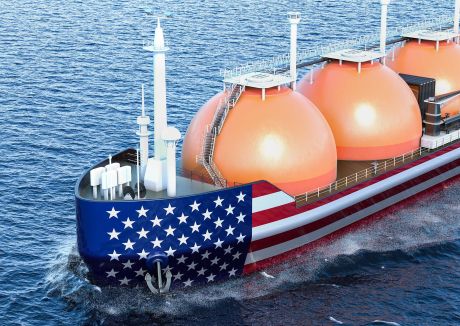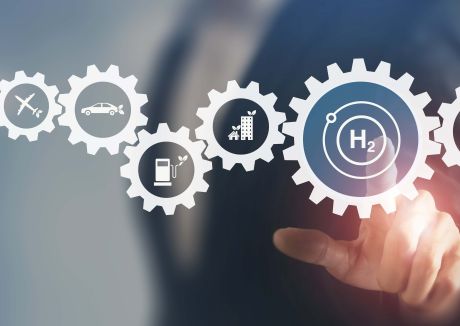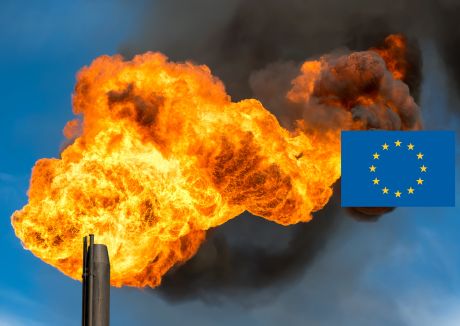In today's world, where sustainability and environmental consciousness are at the forefront of global discussions, finding greener alternatives to traditional fossil fuels is paramount.
Currently, unabated fossil fuels account for over 60% of total global electricity generation (IEA, 2023), and therefore, the rise of E-fuels has the potential to revolutionise our energy landscape.
But like any emerging technology, there are key considerations to keep in mind to ensure you maximise the effort invested in what is still a nascent sector.
It may seem daunting but it doesn’t have to be – the guide below unpacks key considerations to help navigate this exciting yet complex terrain.
The Do’s
The term 'e-fuels' is commonly used to describe the growing range of ‘greener’ fuels including hydrogen. However, it is important to clearly delineate what constitutes e-fuels and their intended applications. E-fuels are defined as those generated using electricity derived from renewable sources, water, and CO2 (for example, e-diesel, e-methane or e-methanol). Other sustainable fuel options include biofuels, which are derived from biomass such as vegetable and animal fats.
Do consider adopting the term 'low carbon fuels' to encompass this diverse spectrum of alternative fuels. This would enable tailoring of definitions to align with climate objectives and specific operational needs.
Secondly, there is no one-size-fits-all solution from a technical perspective. The suitability of e-fuels varies significantly depending on the specific technological requirements, ranging from energy density and efficiency to infrastructure compatibility and cost-effectiveness. For instance, while e-ammonia might be ideal for heavy-duty transport or energy storage due to its high volumetric energy density, kerosene derived from agricultural waste might better suit applications in aviation, where high mass energy density and compatibility with existing infrastructure are critical.
Therefore, the optimal e-fuel solution hinges on a thorough assessment of each application's unique requirements and constraints.
Path to decarbonisation: the graphic below is a snapshot of the process involved with converting resources to fuel that aligns with climate objectives (click to enlarge)
From a commercial perspective, ensuring there is clear line of sight to an off-take agreement is paramount in the decision-making process for investing in e-fuels projects and can ultimately govern whether a project is developed.
An off-take agreement mitigates the financial risks associated with large-scale investments in infrastructure and production facilities and without this, uncertainty regarding demand could hinder project development. For example, annual production of low-emission (green) hydrogen could reach 38 Mt in 2030, if all announced projects are realised.
However, only 4% of this potential production has taken a final investment decision (FID) (IEA,2023). Companies must therefore engage potential off-takers, together with securing any required government support, early in the project lifecycle and establish robust contractual agreements to guarantee a reliable market for their e-fuels output.
This strategic approach not only fosters investor confidence but also facilitates the growth and sustainability of the e-fuels industry by aligning production with market demand.
Finally, do consider the end-to-end supply chain when planning the transition to e-fuels. Each component along the supply chain cannot be viewed in isolation, as they are interconnected and requires integration to optimise logistics and economic viability.
Whilst there is a tendency to focus on e-fuel supply, transportation and storage of e-fuels and particularly the intermediate hydrogen product is often overlooked and can in fact be the most costly and emission intensive part of the value chain. For example, while ammonia is already a widely traded product for fertiliser production, expanding the infrastructure for future fuel uses will be a significant challenge.
Conducting a comprehensive evaluation of the commercial, operational and environmental feasibility of e-fuels can help companies build a holistic business case and augment decision-making from the project’s inception.
The Don’ts
Being beholden to a single e-fuel solution can be risky for companies due to the variability of energy demand across different sectors and applications, and current uncertainty around timing of supply availability. Exploring a diverse portfolio of e-fuel options offers companies resilience against uncertainties such as fluctuating market conditions, technological advancements, and evolving regulatory landscapes.
By maintaining flexibility and assessing multiple e-fuel options, companies can tailor their energy strategies to specific needs, optimise performance, mitigate risks, and contribute to a more sustainable future.
Don’t underestimate the complexities of the e-fuels supply chain. Unlike traditional fossil fuels, the infrastructure for manufacturing, handling, transporting, and storing e-fuels is not well-established and requires further technological advancement.
Logistics challenges such as compatibility with existing transportation modes and infrastructure, as well as the need for specialised handling procedures (e.g for ammonia and methanol), require significant planning and investment.
Similarly, storage solutions must be tailored to the unique properties of the fuel in question, considering factors like temperature sensitivity and chemical stability. Working through the details to ensure reliability, efficiency, and safety of e-fuels will ultimately drive the transition towards effective and sustainable energy solutions.
Beware of solutions that sound too good to be true. What may succeed at lab scale may not necessarily translate to commercial viability. The challenges of scaling up technologies to industrial production — including engineering complexities, material sourcing, and operational costs — may differ significantly when applied to real-world applications. By approaching promising technologies with a critical eye and rigorously analysing the feasibility at commercial scale, companies can mitigate risks and make informed decisions about their investments in renewable hydrogen, e-fuels and other emerging solutions.
Finally, don’t switch to low carbon fuels without accounting for the end-to-end carbon emissions of the entire value chain. While e-fuels offer the promise of reduced greenhouse gas emissions compared to conventional hydrocarbons, overlooking the full lifecycle emissions could lead to unintended consequences. For instance, if the emissions generated during the manufacture and transportation of e-fuels exceed the carbon offset achieved by their use, the overall environmental impact could be negative.
Careful consideration must also be given to the source of any carbon used in the manufacturing process, that is, re-use of captured fossil CO2 is of limited benefit. What is critical, therefore, is a comprehensive assessment that considers the entire supply chain and associated emissions to ensure that the transition to low carbon fuels contributes to advancing sustainability goals.
The emergence of low carbon fuels presents a promising solution for sustainable energy systems, from transforming transportation to redefining industrial processes. But as we embark on this journey, it is essential to anticipate challenges and complexities while fostering innovation. By doing so, we have a unique opportunity to ignite a future fuelled by the power of low-carbon solutions.









